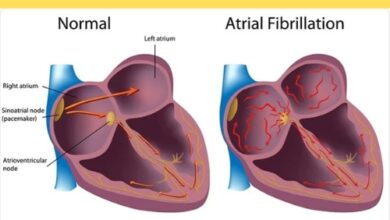COVID trend reaches “high” level across western U.S. in latest CDC data

According to statistics released by the Centers for Disease Control and Prevention, a critical indicator used to monitor the spread of COVID-19 has officially reached “high” levels in the western states of the United States. But according to the EPA, it’s still too early to tell if the summer COVID-19 rise of this year has spread across the country.
The majority of the nation is seeing an increase in the amount of SARS-CoV-2 virus found in wastewater samples, according to data from the agency as of June 27.
With most cases no longer being tested or reported, health authorities are depending more and more on sewer sample analysis to gauge COVID-19 trends. To track the infection, the CDC also uses information from hospitals and ERs.
According to the CDC, virus levels in wastewater are remain “low” across the country. However, early data from the most recent weeks indicates that this significant COVID-19 trend has now crossed over what the FDA regards as “high” virus levels in the West.
“Summer is back, and the so-called summer bump in COVID cases is about to happen.” We see a spike in the summer, a dip in the fall, and a more significant increase in the winter, according to Dr. William Schaffner, a professor at the Vanderbilt University School of Medicine, who spoke with CBS News.
The CDC has refrained from declaring that the summer spike of this year has started, though.
“COVID-19 activity decreased in April and May of 2024 compared to all previous times since the pandemic’s beginning. The CDC stated in a statement on Friday that “Recent increases need to be considered from that baseline.”
Though not usually at this particular time of year, previous years have shown increases in COVID-19 levels over the summer following tendencies that sharply decline during the spring. The summer surge of the previous year peaked in late August or early September.
“National COVID-19 activity is still modest, despite signs that a summer boom may be about to begin. The CDC stated that it will keep an eye on things to see whether these recent increases continue.
Hawaii has the highest COVID trends.
Hawaii has been experiencing some of the worst COVID-19 trends among the western states; wastewater levels there are currently greater than they were during the peak of the previous winter.
COVID-19According to CDC data from recent weeks, 19 ER visits in Hawaii have also reached some of the lowest points in more than a year, surpassing peaks from the previous summer and winter.
It’s possible that these tendencies are beginning to slow down now.
After weeks of growth, COVID-19 cases are now “likely declining” in Hawaii, according to the CDC’s forecasters, who made the announcement last week. Aside from peaks from the summer and winter waves of the previous year, emergency room visits appear to be plateauing in the regions spanning Hawaii to Arizona.
Variant LB.1 is more prevalent in the East
The introduction of a new version on the other side of the nation, the LB.1 variant, a relic of the JN.1 variant from this past winter’s wave, has coincided with the increases, according to officials and specialists.
According to CDC estimates, as of early June, 30.9% of cases in the New York and New Jersey region were infected with LB.1. In the same time frame, LB.1 was responsible for less than 1 in 10 cases in the western states.
COVID-19Emergency room data from the New York and New Jersey region shows that 19 trends have increased, although they are still considerably below the levels observed during either the summer or winter’s peaks last year.
According to the government, the virus’s trends in wastewater from the Northeast are among the lowest of any region and are currently at “minimal” levels.




